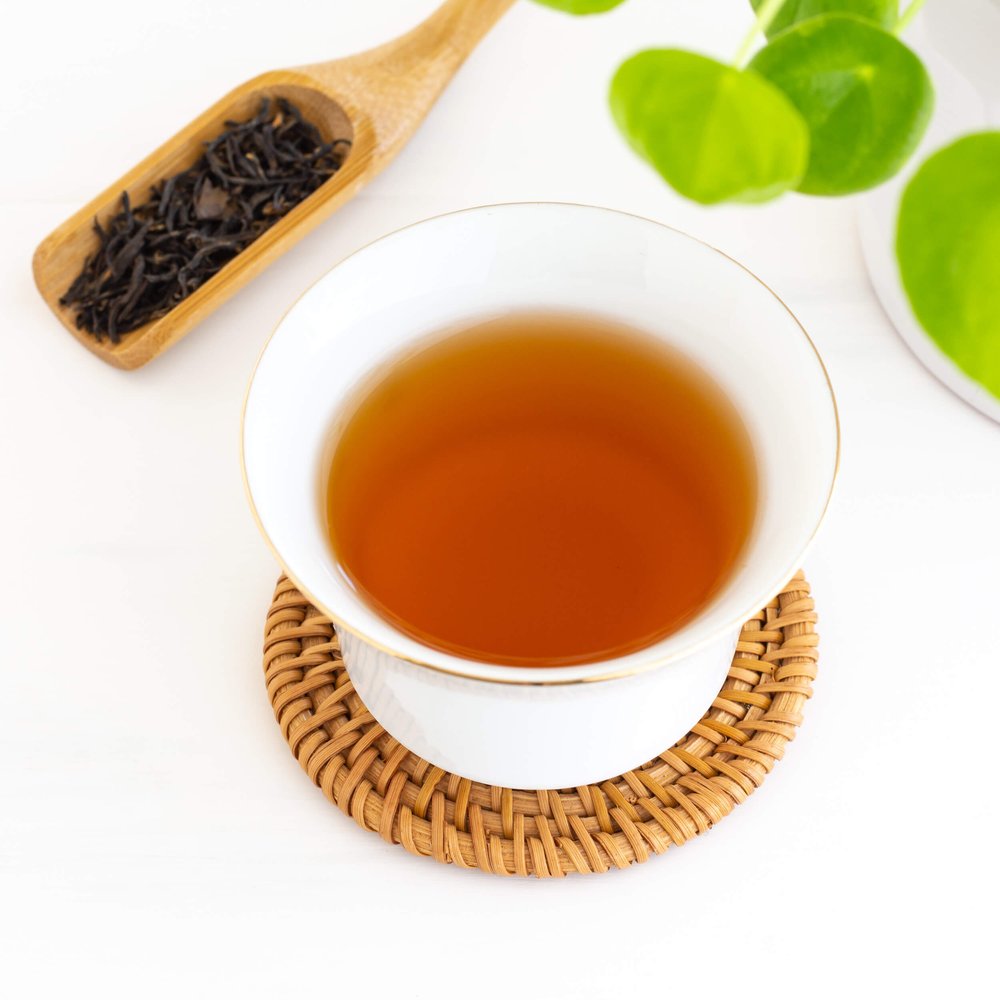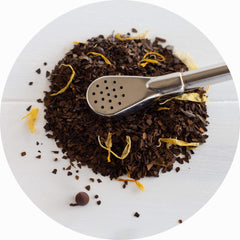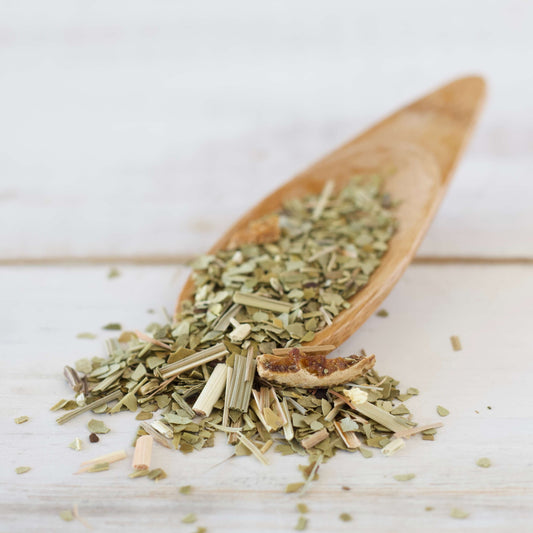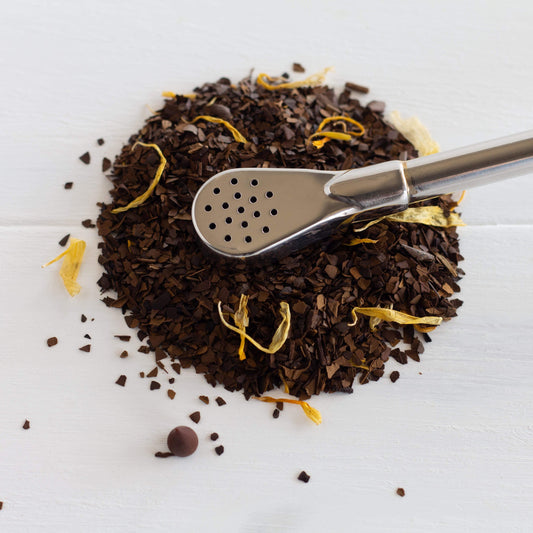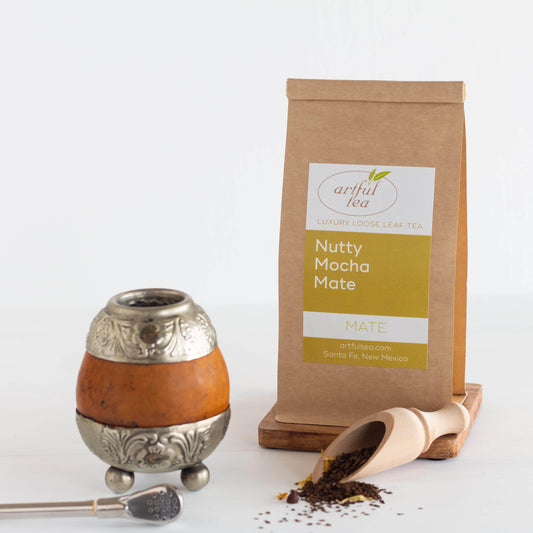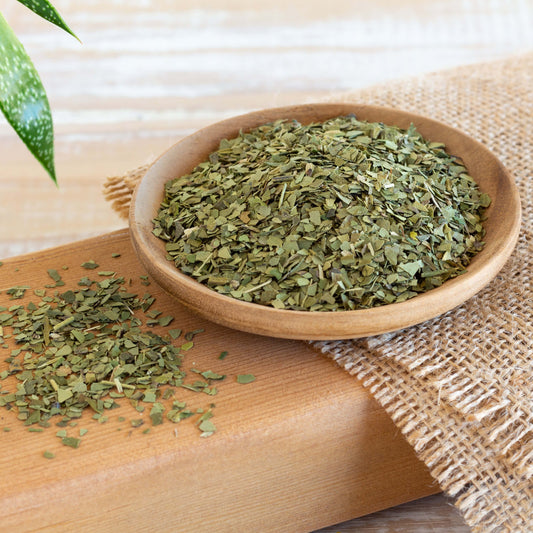While matcha and mate may sound alike, they’re actually two different types of tea. Matcha is a shade-grown, stone-ground green tea produced in Japan, with a bright green color and a rich, vegetal flavor. Mate is a type of tea native to South America that is popular in countries like Argentina, Peru, and Chile. While these teas are very different from one another, they’re both high in caffeine, full of beneficial properties, and have unique preparation methods that set them apart from other types of tea.

Matcha vs. yerba mate: the basics
There are a few main features that clearly differentiate matcha and mate.
Matcha is:
- Made in Japan
- Produced from shade-grown tea leaves
- Leaves are steamed and then ground into a fine powder
- Whisked in a bowl with hot water, or added to smoothies, lattes, and baked goods
- High in caffeine
- High in antioxidants
- Matcha has a smooth, rich flavor with notes of umami and just a hint of bitterness
Mate is:
- Grown in South America
- Popular in countries like Chile, Peru, and Argentina
- Made from a species of holly plant
- Traditionally prepared in a hollow gourd with hot water and a bombilla straw
- High in caffeine
- Mate has a mild, grassy flavor
What is matcha?
Matcha is a fine powder made from green tea leaves. Like some Japanese green teas, matcha is shade-grown for the last few weeks leading up to the harvest, resulting in a bright green leaf with a rich, slightly sweet flavor. Matcha is stone-ground into a bright green powder that can be consumed with water or added to flavored drinks and baked goods. Matcha is a popular drink in Japan, where there is a detailed tea ceremony surrounding the practice of consuming matcha. When prepared traditionally, matcha powder is whisked with hot water in order to form a frothy, savory beverage that can be drunk straight from the bowl.
The history of matcha
Powdered green tea was first produced in China during the Tang Dynasty. In the 12th century, Chinese monks brought both Buddhism and matcha to Japan. The ritualized use of matcha by Japanese monks grew quickly, and by the 15th century, its popularity had spread to Japan’s upper classes. Over centuries, an intricate tea ceremony surrounding matcha was developed. Today, matcha is primarily associated with Japan, and has a rich history and cultural significance within the country.
How to prepare matcha
Matcha is traditionally prepared using a whisk, scoop, matcha bowl, and hot water heated to approximately 175 degrees. First, scoop the matcha powder into a sifter (we recommend about one scoop, or half a teaspoon, of matcha powder per bowl.) Sift the powder into the bowl, then add a small amount of hot water and whisk until smooth. Then add up to 3 ounces of water, and whisk until frothy. Preparing matcha is largely a matter of personal taste, so feel free to play around with these ratios to figure out what works best for you!
What is Mate?
Yerba mate is a type of tea made from the leaves and stems of the holly plant ilex paraguariensis. It is native to South America, and is sometimes known as “drink of the gods” or “drink of friendship.” Mate has a mild, grassy flavor somewhat similar to green tea, and is very high in caffeine. This tea is extremely popular in South America.
The history of yerba mate
Mate was first discovered and prepared by the indigenous Guarani people. Mate’s etymology derives from both Spanish and Quechua, an indigenous South American language - yerba is derived from the Spanish word for herb, while mate comes from a Quechua word meaning cup or gourd.
After European colonization, mate consumption and production became popular among the colonizers, particularly Jesuit missionaries and other foreign settlers. Mate is extremely popular in South America, where it is the official drink of Argentina, and is also widely consumed in Peru, Uruguay, Paraguay, Bolivia, Chile, and Brazil. It is also very popular in Syria, the world’s leading importer of mate, as well as Lebanon and other parts of the Middle East.
How to prepare yerba mate
Mate is traditionally prepared in a hollow gourd by adding leaves and hot, but not boiling water to the gourd to steep. The tea is then consumed through a filtered straw known as a bombilla. In many South American countries, mate is drunk among a group of friends by drinking and refilling the same gourd as it is passed from person to person. Mate can also be prepared in the same way as other teas and tisanes, by steeping the leaves in an infuser or filter in a mug or pot.
Our yerba mate teas
We carry several tasty mate teas, including unflavored Yerba Mate, as well as flavored blends.
Yerba Mate
Native to South America, yerba mate is a popular beverage in countries including Argentina, Chile, and Brazil. Stimulating and somewhat grassy, mate is traditionally drunk from a gourd using a metal bombilla straw – although you can certainly also enjoy it from a teacup or mug!
While Yerba Mate does contain caffeine, many people experience its effects differently than the caffeine present in tea or coffee. Mate’s stimulating properties are often described as having a more gradual and sustained effect, with none of the highs and lows of other caffeinated drinks.
Nutty Mocha Mate
The indulgent taste of chocolate and hazelnut, plus mellow chicory, give this mate blend a rich, roasted, mocha flavor. Yerba mate is an herbal infusion, but unlike most herbal teas, mate contains caffeine.
Lively Lemony Mate
A refreshing blend of green yerba mate and lemongrass, this stimulating drink is a traditional beverage of many parts of Latin America. This blend has a lively, citrus lift. While Yerba mate is an herbal infusion, unlike most herbal teas, it contains caffeine.
Our matcha teas
We carry several types of matcha, including ceremonial grade matcha and culinary grade matcha, as well as a variety of matcha accessories.
Ceremonial Grade Matcha
Our organic ceremonial grade Matcha is an excellent choice for daily drinking. This high quality Matcha is a brilliant green color with a mild, natural sweetness, and offers balanced nutrient value. It is called "ceremonial grade" because the quality is high enough for formal Japanese tea ceremonies.
Culinary Grade Matcha
This organic culinary (or cooking) grade of Matcha is made specifically for use in any recipe calling for Matcha, including smoothies, lattes, and baking. This excellent quality culinary grade Matcha has a slightly stronger taste than our ceremonial grade, so the Matcha flavor can shine even when mixed with other ingredients.
Matcha to Go
No need for whisking or sifting, these packets easily mix with hot or cold water. They contain high quality matcha blended with a small amount of dietary fiber to prevent the clumping that usually occurs with matcha. These are intended to be used only with water.
